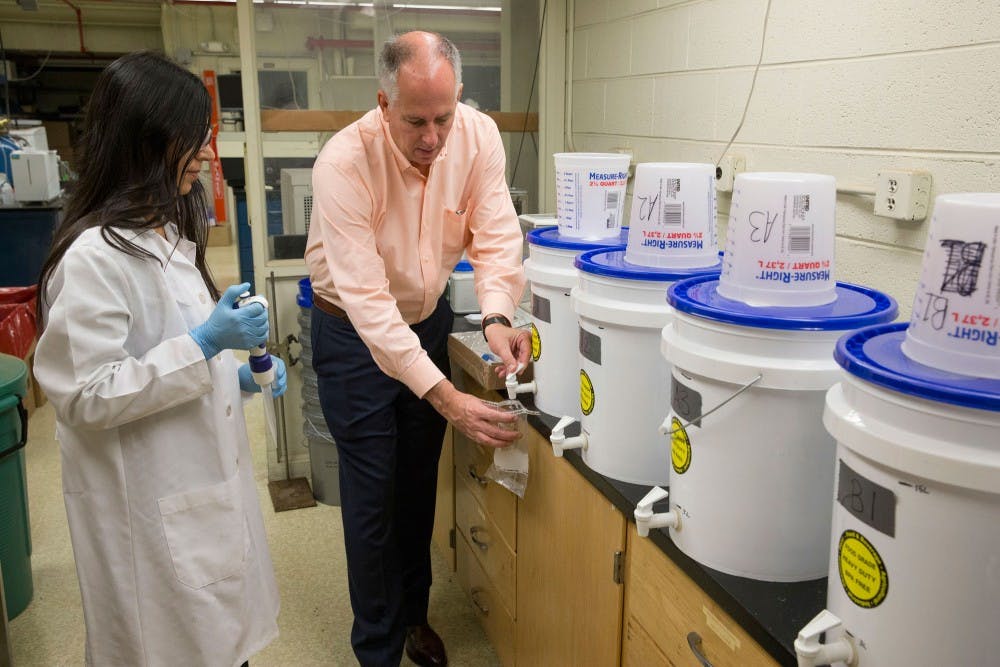Jim Smith, a professor of civil and environmental engineering, helped bring MadiDrop+, the latest version of a reusable ceramic water purification tablet, to communities in South Africa and others around the world.
MadiDrop+ is a microporous ceramic tablet infused with silver clusters and is the size of a Jenga wooden block. The tablet gradually releases low levels of silver ions to kill bacteria or potentially harmful organisms in the water by inhibiting cellular respiration.
According to Smith, the MadiDrop+ treats up to 20 liters of water a day and has a lifespan of a year, thus providing approximately 7,000 liters of safe drinking water for a family. To use this product, you simply place it in a bucket of contaminated water overnight, and it becomes safe to drink the next day. It is also affordable at around $6-7 per unit.
The previous version, MadiDrop, treated 10 liters of water a day for six months at $5 per unit.
“We discovered a better way to apply silver to the MadiDrop so that it could treat a larger amount of water and last a longer period of time,” Smith said. “We essentially quadrupled its performance.”
Smith said around 30,000 MadiDrops have been distributed affecting 150,000 people around the world.
Beeta Ehdaie, a current American Association for the Advancement of Science Policy Fellow at the U.S. Department of State, said that the most important aspect of this tablet was making sure that the levels of silver released would be safe for consumption yet effective. Ehdaie previously did her dissertation on the development of the MadiDrop.
According to Ehdaie, one challenge was optimizing the tablet for realistic volumes of water since they worked with small quantities of water in the laboratory. Thus, they had to adjust the proportion of ingredients and the methods in order to ensure that the same type of release in silver particles that was seen in small volumes would be seen in larger volumes.
In addition to the difficulty of attempting to scale the technology to a useful level, another challenge was developing a technology that people would be interested in.
Although focus group studies showed that families liked the product in terms of use and durability, they didn’t think that it was visibly appealing. The concern that the product looked like a rock or a brick had to be factored into redesigning the product.
With each challenge, the team had an opportunity to further improve the MadiDrop technology. Smith said that the U.Va. Licensing and Ventures Group played an extremely important role in helping move this technology from the laboratory to the commercial market.
Courtney Hill, a Ph.D. student in the civil and environmental engineering department, has been evaluating the human benefits of MadiDrop by looking at factors such as the height of children over time.
Hill said that the researchers saw a significant reduction in the amount of pathogens in water with the use of the tablet. The tablet was able to effectively reduce 10,000 colonies of bacteria in a 100 mL volume of water to zero colonies
According to Ehdaie, this technology has been provided to multiple NGOs around the world. They are sold wholesale to government agencies, distribution companies and non-profit organizations focused on humanitarian aid and disaster relief.
The group has several goals for the future — they want to be able to accurately measure the tablet’s usage and bring the product into communities around the world with the help of large international aid organizations like the Red Cross and Catholic Relief Services. They also hope to begin producing the tablets locally in the regions that need them most, such as in India.
This would help avoid import tariffs in these countries and ultimately keep the price of the tablet low in order to make it as widely accessible as possible. If the model proves to be successful in India, the team will expand these efforts to other countries as well.







